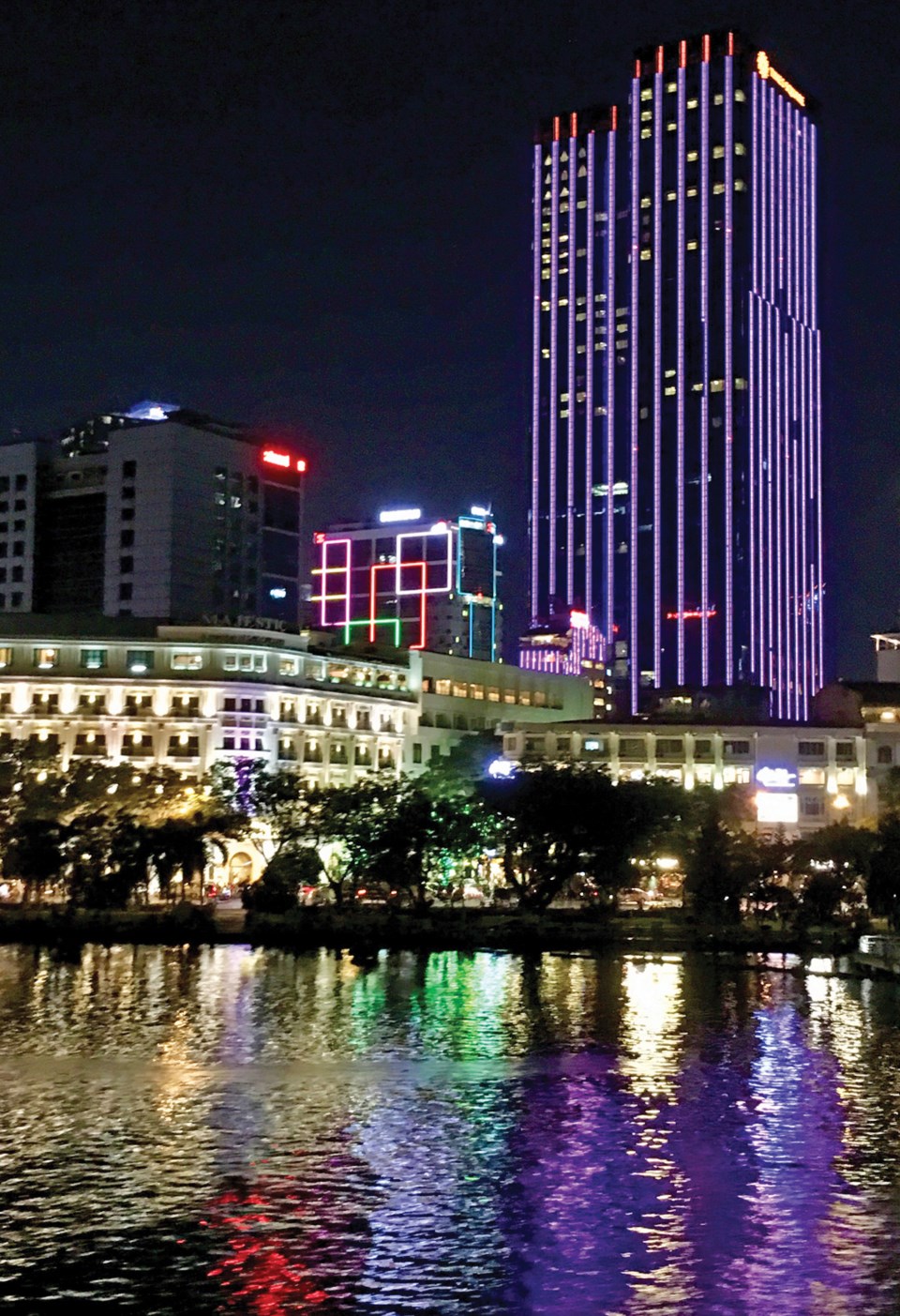The airport shuttle creeps through heavy congestion. “Welcome to Ho Chi Minh City, Vietnam’s largest hub at thirteen million people,” begins our Uniworld guide. “My name’s hard to pronounce. Call me AK…without the 47,” he quips. “In my hometown, family is important. Know I consider you relatives!”
Soon settling into our splendid hotel, we order room service. Steaming bowls of pho and mouth-watering spring rolls conclude our travels in sublime comfort. Next morning in the elegant breakfast room, eastern specialties and western favourites energize us for touring...
Our excursion coach navigates amid thousands of motorbikes filling city centre. Sighting few crossings or traffic lights, negotiating streets on foot looks daunting. “Start boldly,” AK advises. “Keep going! Stay together, like sticky rice! Traffic just flows around you.”
At Independence Palace, we gather at one of two North Vietnamese army tanks displayed near the entrance. “Saigon fell here in April 1975. Tanks like this rolled into town, crashed through those wrought iron gates and approached the palace,” AK explains. “A Viet Cong soldier ran inside and unfurled their flag on the fourth floor balcony.”
South Vietnam’s residential workplace for two presidents has become a landmark museum. Original 1960s furnishings decorate its interior. Reception, dining and meeting rooms boast plush carpeting, red-upholstered couches and lacquer paintings depicting dynastic warfare. Strategic operations maps and black, red and white rotary telephones remain in the war room. An open-air meditative garden accesses family quarters.
Shuttling onward, old Saigon’s architecture reflects a century of French occupation. At Eiffel’s art deco Central Post Office, we mingle with hundreds of locals in its huge vaulted hall. Out on the plaza, AK points to the twin-towered cathedral across the street, “Notre Dame was built with bricks brought from France. And see that old three-storey building? When the Vietnam War ended, the last American helicopter left from its rooftop.”
Stopping at a lacquer workshop, we see artisans demonstrate lacquer-layering techniques. A showroom displays this traditional artwork applied to wall plaques, trays, knick-knacks and furniture, often featuring Vietnam’s natural beauty. And in nearby colonial-built Ben Thanh Market, over 200 stalls have everything imaginable. AK reminds us, “Remember: haggling’s the key to cutting prices!”
The day concludes with a leisurely dinner cruise along the Saigon River. From the open deck of Saigon Princess, we admire glass high-rises flaunting neon rainbows. Among brightly lit boats, one resembles a giant blue fish. Before our debarcation, musicians prompt lively shipmates to belt out pop tunes.
Next morning, we travel outside Saigon to the storied Cu Chi Tunnels. Looping on dirt paths through this hot, humid, open-air museum. The surrounding jungle offers us shade, without mosquitoes! We learn the tunnel system was established to combat the French from 1948 to 1954. Expanding during the Vietnam War, networks stretched over 150 miles to Cambodia. These remarkable mazes helped Viet Cong fighters dominate rural areas.
Park docents show us ingeniously camouflaged tunnels. And bogus entries are rigged with bamboo or metal spikes to impale intruders. Alongside a recreated surface kitchen, AK describes how smoke was vented upward and far away from its source. Amazingly, such kitchens, living quarters, hospitals, schools and storage centres could be located three storeys underground. Other exhibits show replicated soldiers recycling unexploded bombs into explosives and converting rubber tires into sandals.
Cooling off in a refreshment area, rapid gunfire reverberates nearby. AK clarifies, “These days, enthusiasts pay one U.S. dollar per bullet to target shoot.” Heading back, we see some crawl 20 metres through a dark, narrow demonstration tunnel and emerge grinning!
Relishing family-style lunches in a colonial clubhouse, our spirited conversations review Ho Chi Minh City’s resilience, resourcefulness and beauty.
See www.uniworld.com – The Wonders of Vietnam, Cambodia and the Mekong – for more details.



